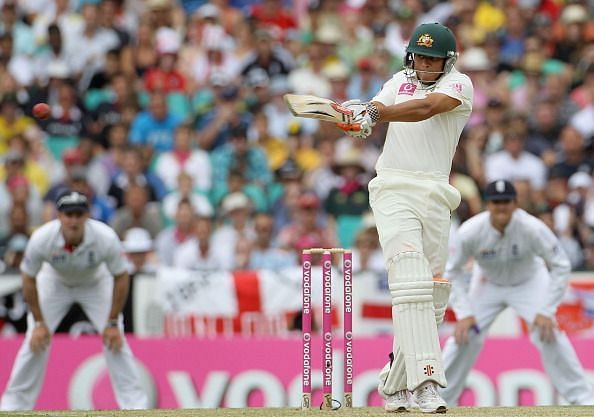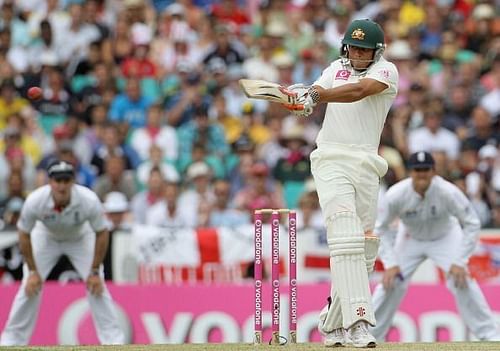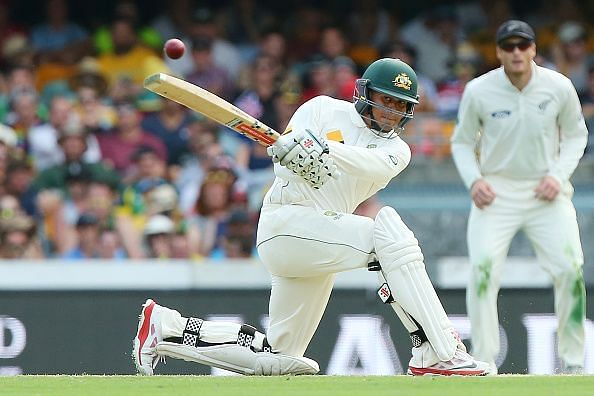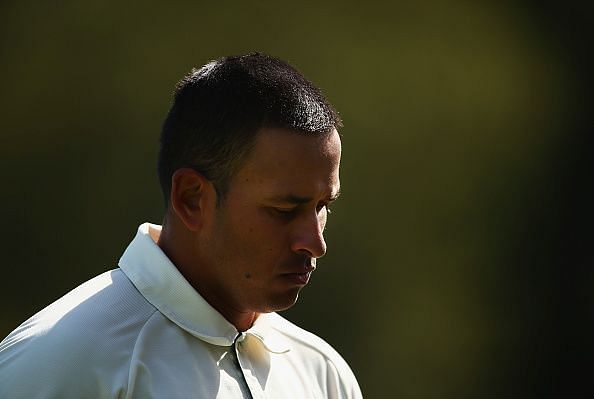
Under the SKanner: Usman Khawaja

Long before his Test debut in a dead rubber at Sydney against England in 2011, Usman Khawaja was a highly rated top order batsman in Australia; and though both his knocks at the SCG were ended after confident starts - he fell for 37 and 21 in Australia's third innings defeat of the series - Khawaja's game brought its share of hope and promise in a tournament which gave the hosts nothing but horror and despair. He then represented New South Wales in domestic cricket before moving over to Queensland in 2012, and flew to Sri Lanka with the national side later in the year after winning the faith of the selectors in his maiden international appearance.
For three separate stints from 2011 to 2013, the southpaw was inducted into the team for three consecutive Tests, but despite 17 innings, his highest score remained 65 against South Africa at Johannesburg in 2011 - he added 122 for the third wicket with Ricky Ponting in a successful run chase of 310.
But despite the early expectations, Khawaja failed to make it count when it mattered and was dropped again after the 2013 Ashes in England. A serious knee injury in December 2014 threatened to end his career, but the elegant batter soon returned to action and was named his state's captain for the 2015 domestic season.
Here we analyse his strengths and weaknesses as one of the top three in the Australian batting order.
Strengths
Sound technique, particularly on fast, bouncy pitches

A solid technique, both on the front foot as well as the back foot, has made Khawaja earn a name for himself. Having switched over to the hard, pacy tracks of Brisbane from the relatively softer surface which Sydney offered him at New South Wales, Khawaja prospered after developing a sound technique which strengthened his game.
He is comfortable in facing fast bowlers while positively defending and also convincingly driving the ball down the ground. A commanding hook and an authoritative pull is a left-hander's delight, while the ability to bravely attack spin early in his innings on home pitches is a shot in the arm for his team.
Strong against pace
Having faced the likes of James Anderson, Stuart Broad, Dale Steyn, Vernon Philander, Trent Boult and Tim Southee with elan - he has been dismissed by them collectively only 9 times out of an aggregate of 44 - Khawaja has nurtured his batting against rapid pace with time and experience. He can block when needed; he can drive when demanded; he can cut when the ball is short and wide, and he can pull when confronted with a bouncer or a short ball.
Across Tests in the friendlier conditions of Australia, New Zealand and South Africa, Khawaja averages 63, 69 and a decent 38, respectively, though he would want to enhance his record in the more swinging and seaming climes of England, where he averages 19 after three games in the 2013 Ashes.
A great prospect for Test match cricket
It was no surprise that Khawaja was first inducted into the Australian Test team before making it to the shorter formats. Regarded as a talented first-class batsman much before tasting international cricket, Khawaja edged past his then chief competitor Phil Hughes in grabbing the limelight of the national selectors. A Test average of 47 as compared to a lowly ODI average of 31 speaks of his convenience in the longer format.
After Michael Clarke, Shane Watson and Chris Rogers all retired post the 2015 Ashes defeat in England, Khawaja was recalled to the Test team at the start of the home summer in 2015/16. Immediately after his return, he smashed a career-best 174 and 121 in consecutive matches against New Zealand. He got two more hundreds in his next three innings to confirm why he was considered an apt replacement for the retirees.
Weaknesses
Slow, low pitches of Asia

Undoubtedly possessing a strong method on quick pitches of Australia and South Africa, Khawaja has been found wanting on the slow and low surfaces of the sub-continent. He has twice played in Test series in Sri Lanka - two matches each in 2011 and 2016 - but his returns were disappointing on both occasions. In 2011, he managed a mere 60 runs at an average of 20, falling to the pace of Chanaka Welegedera both times that he was dismissed in the series. Hence came the axe when the third Test arrived.
In stark contrast to home pitches, Khawaja found the ball coming extremely slowly onto the bat and at a height much lower than expected. Whereas the ball often jumps towards the waist outside Asia, he jostled to play deliveries rising only upto his knee.
Spin bowling and the turning ball
In Khawaja's young career of 23 Tests, he has had to tackle quality spin in only four matches, all of which have come in Sri Lanka. Post his failures in 2011, when an opportunity for redemption in the island nation arrived five years later, he was tormented by the slowness and the lack of pace, which he enjoys to the fullest.
In the first Test at Pallekele, he was trapped in front by first the wily Rangana Herath and then the off-spin of Dilruwan Perera; in the following match, Perera got him bowled both times for below par contributions, including a first-ball duck. And just like in 2011, Khawaja was dropped for the third and final Test of the series. So low had the team's trust in him dipped that despite being included in the squad for the Tests in India in 2017, he did not manage to find a place even in the team playing the warm-up match on that tour.
Australia perhaps feared another failure for Khawaja against the likes of Ravi Ashwin and Ravindra Jadeja, and he only warmed the benches throughout the series.
Inconsistency in ODI cricket
In 18 ODIs so far, Khawaja is yet to reach three figures in an innings while averaging a lowly 31. While fully utilising the time that Test match cricket allows him to settle down, he has been unable to get going in one-day cricket, which demands a top order batsman to accelerate early, especially with only two fielders manning the boundary in the first ten overs.
Often starting slowly, Khawaja has also fallen short of converting starts into big, match-defining contributions. Though an argument for him can be a ridiculous ODI selection policy for which Khawaja himself has expressed his frustration in the past, even in his last three ODI innings - all against Pakistan at home in 2017 - he could only score 17, 9 and 30 to twice surrender a settled start. In order to establish himself across both formats, not only should he find the favour of the men who matter, but also score big runs at the top.